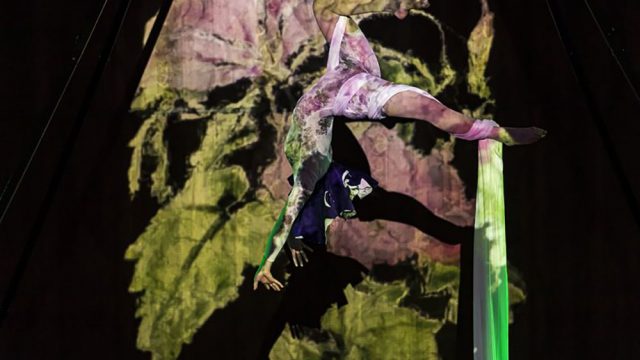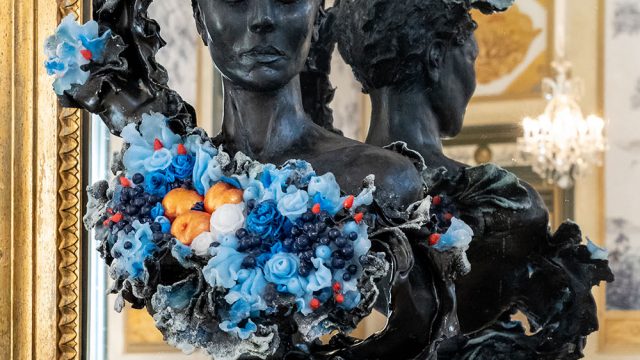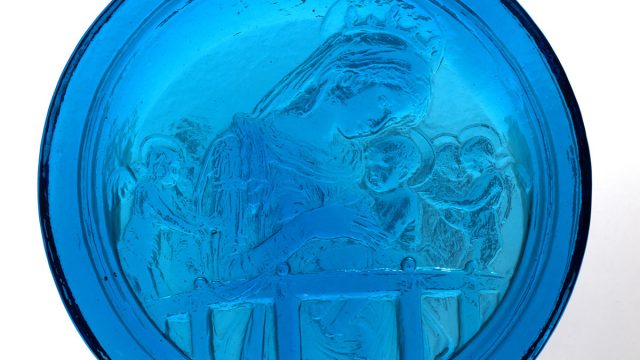Florence Dwyer’s residency was part of DesignLab Nation, where she worked across the V&A Wedgwood Collection and V&A South Kensington. Her research formed the basis of teacher resources to support wider Secondary school programming linked to the design and technology GCSE syllabus.
Her practice is informed by embodied research into social and cultural histories most commonly related to industrial manufacturing, domestic craft and vernacular design. She often draws on ideas surrounding gendered work, capitalism and the transculturation of craft and objects. This is reflected in the output of her work, which ranges from familiar items of domestic pottery and arcane objects inspired by historical cultural rights to tapestries and hand-tufted carpets. Her research often involves working alongside professional makers in different capacities.
At the end of her residency Florence sat down with me, part of the V&A South Kensington Youth Collective, to discuss her work during her time at the V&A.
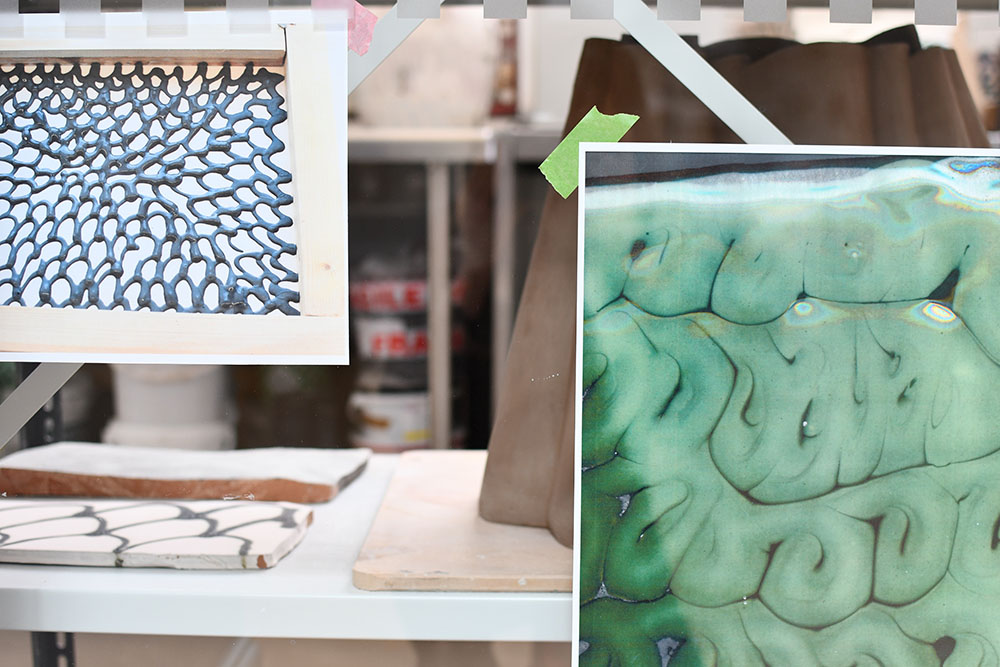
What was your relationship to the V&A (and especially the V&A Wedgwood Collection) before you started the residency?
The V&A has always been an incredibly useful resource for me within my practice, as I often look towards historical objects or use archives to inform my ways of making and researching. As well as often using the V&A as an online resource, I do particularly remember always making a bee line for the ceramics galleries.
There’s something so immersive about the quietness of the top floor, where you can weave your way in and out of thousands of different objects all made from clay, with each one telling a different story. It’s a bit of a treasure trove and being in there has the effect of leading you down different conceptual tangents, while you’re also learning about the technical processes involved in making these objects.
I remember always really enjoying Galleries 136 – 139, where the shelves are densely packed from floor to ceiling, because they create the feeling that you’re behind the scenes with these objects and that they are yours to look at and learn from. I hadn’t had the chance to visit the V&A Wedgwood Collection before my residency, but as my work draws on the history of industrial manufacturing, it had always been on my radar. I was keen to visit!
Your work often draws on craft histories and recognised design objects, exploring the language embedded within making and their encounters within society. What was the process of translating the history and culture that Wedgwood holds and transmitting it into your own practice?
At the beginning of the residency I was keen to spend time not just within the museum, but also within the factory itself. The V&A Wedgwood Collection is unique in the way that the collections sit side-by-side with the operating factory. I was spending time with Wedgwood’s drawings and designs held in the pattern books, with a particular focus on the useful ware collection. These are non-decorative, functional objects each designed for a very specific use; toothbrush holders, foot warmers, food preservation pots.
I was also keen to spend time learning about the manufacturing that’s happening today, and worked alongside one of the figure makers, whose job is to carve out incredibly detailed, precise clay figurines that are then used to make sprigg moulds. I was drawn to the engine turning lathe in the factory – designed in the late 1700s to produce surface decorations and textures on greenware pottery. Carving clay or applying slip while the pots were turning on this machine allowed potters to decorate pottery with great precision. I was thinking about the crossovers of these processes with my practice, and how they might be able to provide prompts for ways of manipulating, playing and working with clay in my studio.
You’ve said before that in your research you look at material processes to form a contextual basis for your work. Are there any techniques or elements of craftsmanship in the Wedgwood collection that you were especially drawn to?
For me a big starting point for the residency was looking at Wedgwood’s trial trays, which showcase the role of craft within industrial manufacturing. Over 5000 tiny test pieces were created during Wedgwood’s quest to develop the perfect clay bodies and glazes. Here you can see the cracks, bubbles, crazing and accidental patterns that result of alchemical processes. To me, these felt so alive, like something not too dissimilar from what you’d find in scientific laboratory.
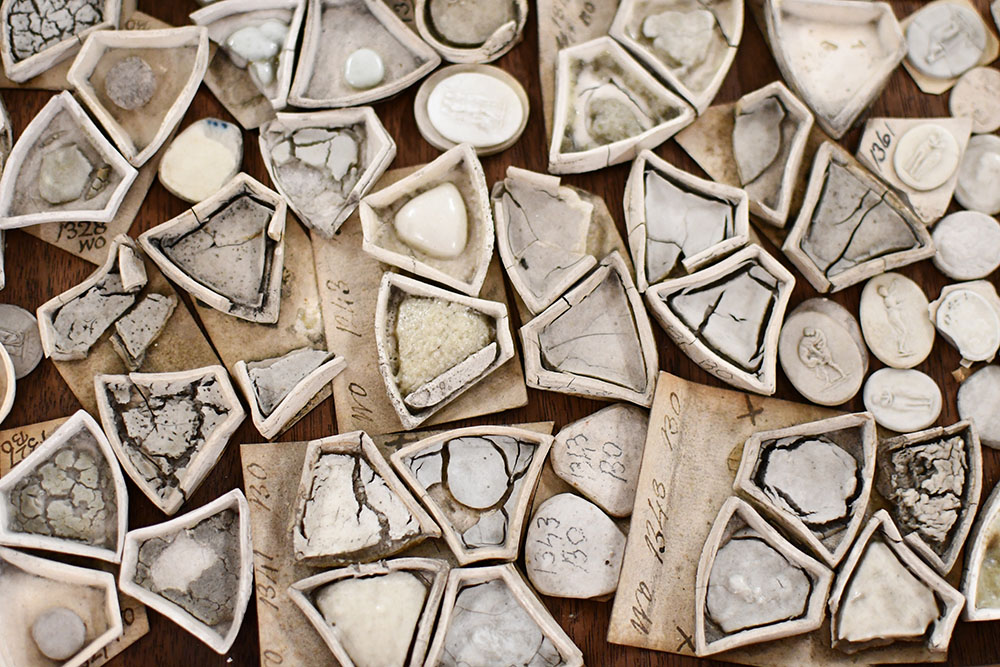
Each test is marked with a code that corresponds to an entry in Wedgwood’s ‘Experiment book’. At that time, this would have been kept secret to prevent industrial espionage. I decided to echo this approach, opening up my practice to embrace experimentation, play and failure. I did this by choosing a select group of ingredients (slip, clay and oxides), and playing around with their combinations to create over 90 different ‘test tablets’. These then provided me with library of samples to constantly refer back to throughout the rest of the residency (and probably for future projects). Due to the public nature of the residency, I was keen to challenge the coded way of working co-opted by Wedgwood, trying as much as possible to keep my tests, recipes and experimentation as accessible as possible. This is something I’m keen develop further, post residency, perhaps through a book.
What are some other influences and pieces you drew from during the process?
It’s hard to say because there are so many pieces within the museum that have influenced me in different ways. As well as looking at Wedgwood, I was looking at a lot of early Staffordshire pottery that was made before Wedgwood’s time. These were more vernacular pieces made not by huge industrial ceramic manufacturers, but within small workshops or people’s homes. I looked at a lot of 16th– and 17th-century slipware and medieval tile work, thinking about the how these decoration methods were incorporated in to the mechanised techniques happening on the factory floor.
Wedgwood drew upon a lot of these vernacular techniques and developed them to an industrial standard to produce his costly, neoclassical wares. Thomas Toft’s big slipware chargers, the salt-glazed bear jugs covered in clay crumbs and the terra tersia flower pots were just some I found particularly interesting. I was also keen to spend time outside of the ceramics galleries. I’ve spent a lot of time looking at and drawing from the medieval tapestries and learning about their common motifs and functions in society and also having the chance to look at Ettore Sottsass’s ‘Planet as a Festival’ lithographs. These were a great inspiration for me, where he re-imagined ceramic objects as forms of micro architecture.
What was your experience opening your studio up to V&A visitors?
It’s obviously incredibly different from my normal studio in Glasgow, that’s a place where I go to work by myself. This is totally different, there’s a real public and even – perhaps – performative element to it. I think this is really interesting to think about in relation to working with clay. Particularly in my case where I was often working with slip; the pouring, swirling and dripping can feel so gestural, unrepeatable and time sensitive, which I imagine must be quite captivating for an audience. Everything you do is on show. In a way I wanted to make the most of that.
As much as it felt quite daunting, I wanted to open up my practice to people, and having the opportunity to curate the display case just outside the studio was another way of doing that. I decided to show things that captured the middle stages of the making and decision processes. I included some of my Japanese Knotweed glaze tests, a photograph of the interior of a paint shop where the walls had been painted with thousands of different paint samples, one of John Hinchcliffe’s rag rug trials and a piece of cardboard I found with biro tests all over it, among other tests and objects from the museum’s collection. As the residency evolved I attached photographs, diagrams, research images and drawings to the studio windows for people see, and hopefully get a bit more of an insight in to the aspects of making that are often hidden away.
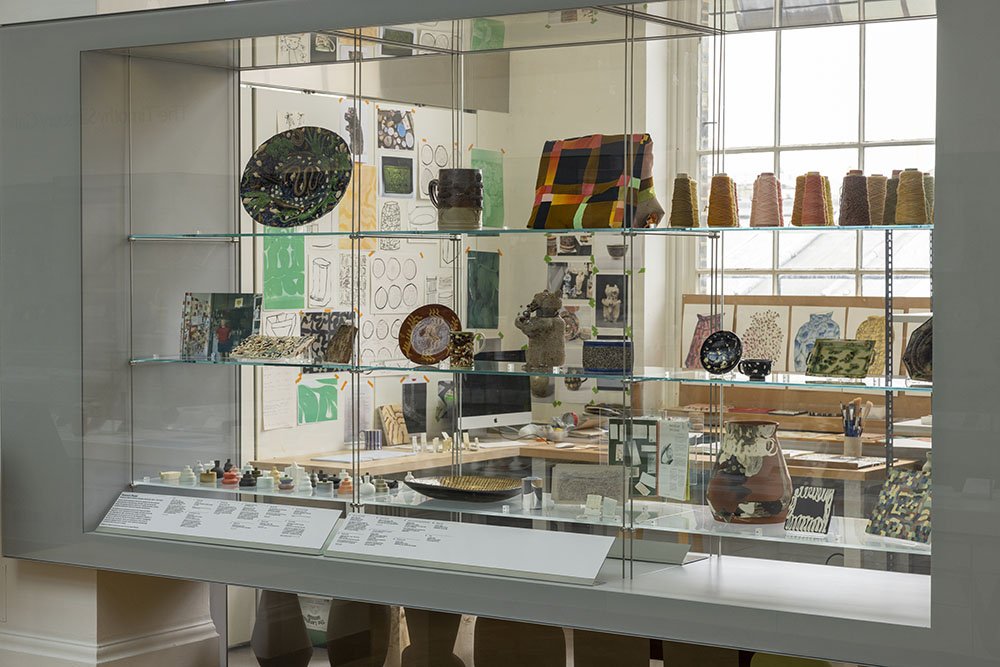
What was it like to work on DesignLab Nation? Having delivered workshops and outreach projects for community groups in the past, how did you find the process of using your research to create learning resources for teachers?
It’s been a really interesting experience, especially to do alongside my studio work and to see how the two have really fed in to each other. I’ve had lots of experience at developing and delivering workshops for different groups. However this has been quite different because I’ve been working with the teachers rather than the students.
We’ve been working together on creating a resource to help teachers teach ceramics within KS4 education. It’s been a collaborative process; I’d develop activities based both on what I’d been up to in the studio and on some of their ideas. Then we’d test them out and think about ways of tweaking them or pushing them further to best suit a classroom situation. We’ve played lots of clay based games, made our own slipware tools from found objects, made cardboard moulds and learnt about the more technical side of ceramics. One of our main aims of this resource has been to give both teachers and students the confidence to make, play and experiment with clay without the fear of failure getting in the way. As well as this, a key focus has been to use and recycle as many materials and tools we have around us, to try and make practicing ceramics as widely accessible as possible,
What was one of your favourite moments of the experience?
There’s been loads. I’ve really enjoyed all the object handling sessions. The other day we got out a selection of 16th-century German stove tiles. It was great to be able to inspect the glaze up close, feel the textures and to turn them over and see how the smoke and heat from the fire they once surrounded had coloured the clay. I found these sessions really useful for interrogating the way things might have been made.
I’ve also really enjoyed going into other departments in the museum; going in to the textile department and learning about how garments are dressed on the mannequins to best evoke the previous wearer for the upcoming DIVA show. And going to visit Paul Robins, the museums X-ray operator, and looking at some of the X-rays he’d previously taken of museum objects: an 18th-century arm chair with thousands up upholstery tacks and nails holding it all together and seeing the insides of a model of Frankenstein were of particular interest!
For me these have been my favourite kind of moments: doing things that are so far removed from what I’d be able to do in my own studio and getting an insight in to all the different processes and people’s specialist knowledge happening in the museum.
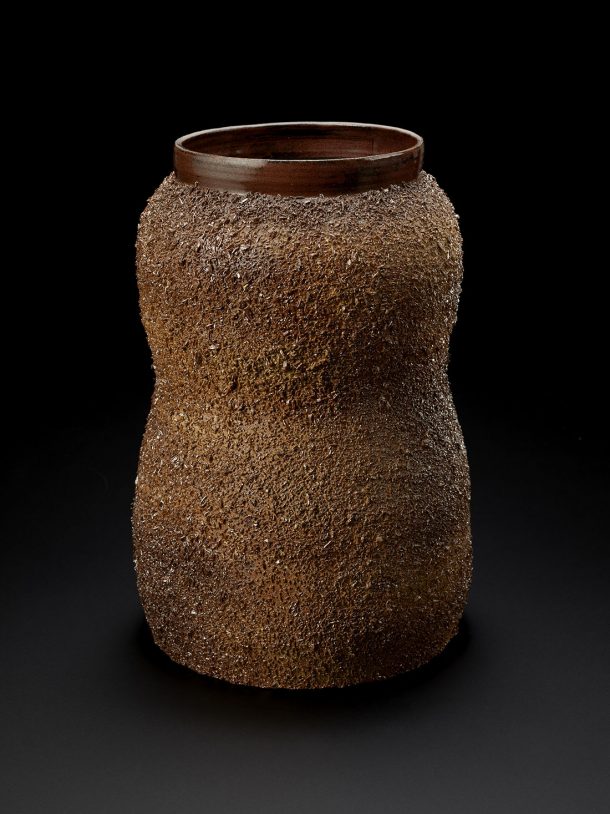
How do you think the residency will impact your future work?
I think it’s hard to figure out exactly how it will at this stage, but research-wise it’s given me so much to go on. It’s given me a wealth of material and ideas that I think I could go on to work with for the next five years! It’s confirmed for me that I really enjoy responding to historical objects and how important it is for me to involve other people in the research and making process, where possible. I’ve met loads of really interesting people through this residency, and they’ve have been extremely generous in sharing their time and knowledge. The curators, Learning Team, technicians and conservators have all allowed me to critically deepen my research and take me down new tangents. I’m looking forward to be able to keep in contact with all these people.
What have you got planned for once the residency ends?
I am going to be working on a couple of different projects. I’ll soon be setting up a studio and working in Ibstock brick-works in Bristol. I’m going to be there to continue on a project I started last year while working in a brick yard in Montemor, Portugal. I’m excited about getting stuck in to that project, to see how this industrial environment will both open up possibilities and pose restrictions for my making processes. As well as this, I’ll mainly be working in my studio in Glasgow to continue exploring and resolving the works and ideas that I’ve started in here to be able to exhibit.
